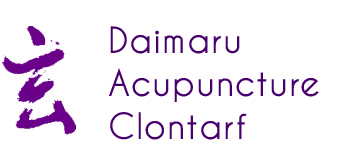

January 25th, 2024 | Posted in 3 Various Specific Problems
ACUPUNCTURE & THE GASTRIC SPHINCTER
Inappropriate relaxation of the muscular lower oesophageal sphincter (LES) is associated with gastric reflux and heartburn. Now a study has shown that electrical non-needle stimulation of Neiguan P-6 can reduce the rate of LES relaxation by 40%.
Fourteen healthy (no heartburn) volunteers were treated either at Neiguan P-6 or a sham point on the hip. A separate study ruled out endorphins or enkephalins as the mechanism of action of the point stimulation by giving the volunteers naloxone, which blocks the effect of these chemicals. (Am J Physiol Gastrointest Liver Physiol, 2005; 289: G197-G201).
ACUPUNCTURE FOR CROHN’S DISEASE
A recent trial of traditional acupuncture for the treatment of Crohn’s disease carried out at the University of Nuremberg has shown it to be statistically more effective than sham acupuncture. 51 patients with Crohn’s disease were randomly assigned to two groups. Both groups received ten treatments over a four week period. The TCM group received needles at
Pishu BL-20,
Zhongwan REN-12,
Zusanli ST-36 or Shangjuxu ST-37
Tianshu ST-25,
and three points based on pattern differentiation (Spleen qi deficiency, damp-heat, Kidney deficiency or Liver insulting the Spleen), plus moxibustion where appropriate. Needles were manipulated as long as deqi was present.
The control group received shallow sham acupuncture at non-acupuncture points without obtaining deqi. A survey showed that the sham group believed they were receiving real acupuncture to almost the same degree as in the treatment group. Outcome was measured by the Crohn’s Disease Activity Index which rates eight symptoms and signs such as diarrhoea, abdominal pain, well-being and red blood cell count. The real acupuncture group showed a significantly greater benefit which persisted when all patients were reassessed after 16 weeks. At this stage the treatment group showed a significant improvement in al-acid glycoprotein, a marker of bowel inflammation (Presented at the ARRC Symposium, October 7th 2001).
BOWEL OBSTRUCTION & ACUPUNCTURE
Writing in the journal Medical Acupuncture, Martha Grout MD describes 2 cases of small bowel obstruction treated by acupuncture. Obstruction is the most common surgical condition of the small bowel (intestine). Patients are frequently hospitalised for several days and may require surgical intervention for definitive treatment. Mean length of hospitalisation in 1 study was 15.3 days and mortality is reported to range from 5%-75% depending on the cause of the obstruction.
In the first case a 27-year-old man who presented to the emergency department of Phoenix (Arizona) Memorial Hospital was treated with standard medical management and acupuncture treatment at Zhongwan REN 12 and Zusanli ST-36 bilaterally. No further needles were used because the treating physician was concerned that stimulating the small intestine directly, e.g. by needling Guanyuan REN-4, might lead to increased bowel motility against a closed obstruction with subsequent perforation. Within 6 hours the patient began to improve and the admitting surgeons expressed surprise that his system began to function so soon.
In the second case a 65-year-old woman presented to the emergency department of John C. Lincoln Hospital in Phoenix, Arizona with recurrence of symptoms of obstruction she suffered approximately every 6 weeks. She was treated with the standard nasogastric tube and intravenous therapy and additionally received acupuncture at
Zhongwan REN-12,
Tianshu ST-25,
Guanyuan REN-4,
Zusanli ST-36 and
Neiguan P-6.
Within 3 hours, the patient was released feeling well and returned to work the next day, rather than 3-4 days later as had happened after previous episodes. Ten weeks after treatment, no further hospitalisations had occurred. (Medical Acupuncture,Volume 12/Number 2).
